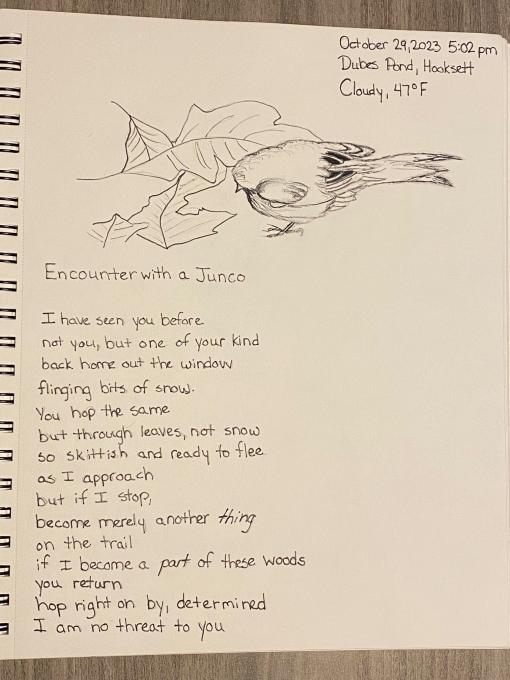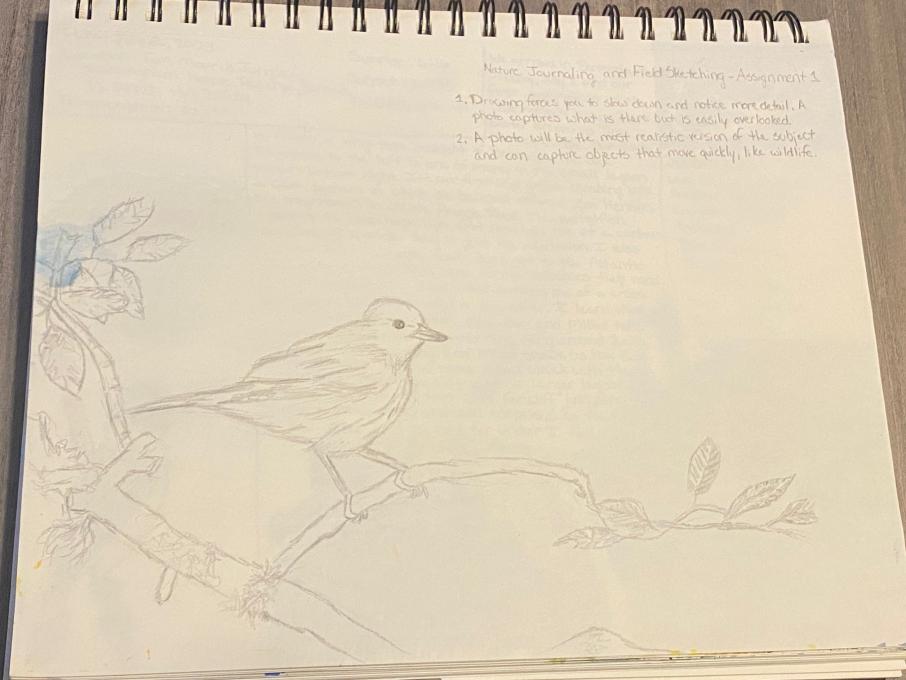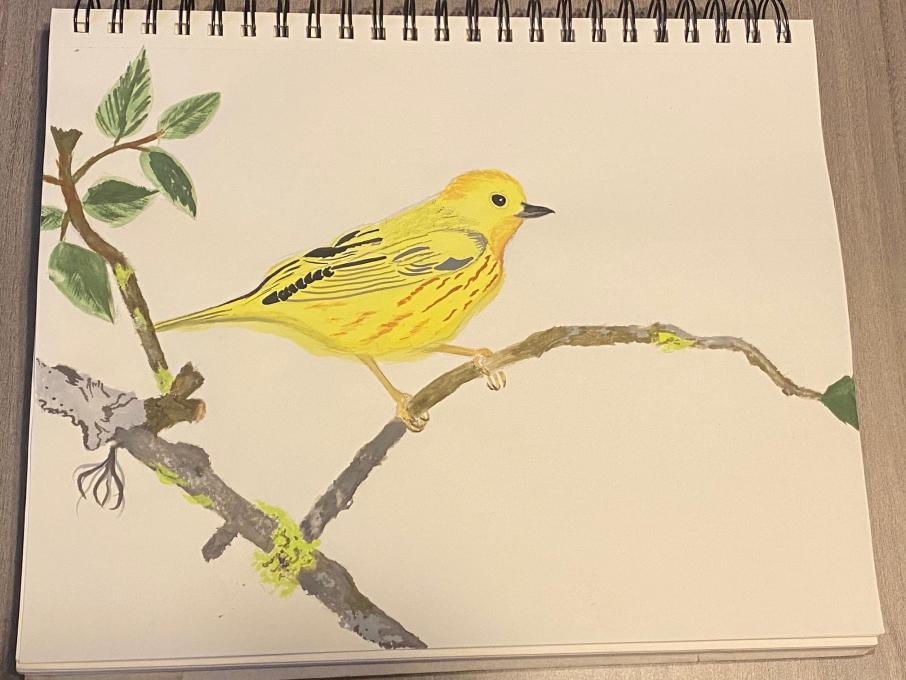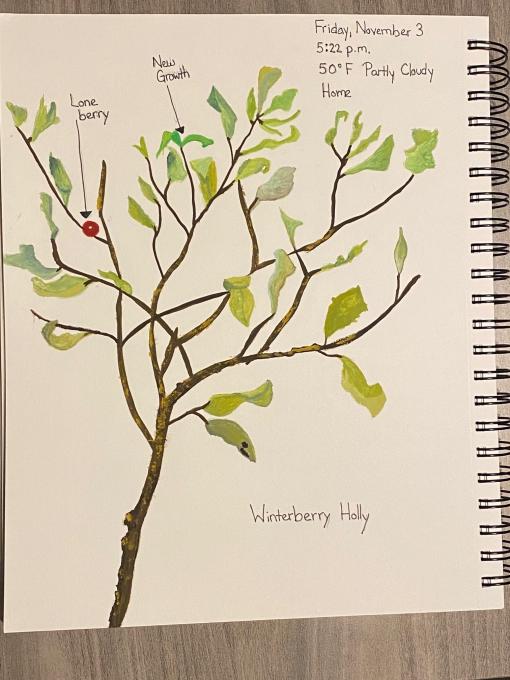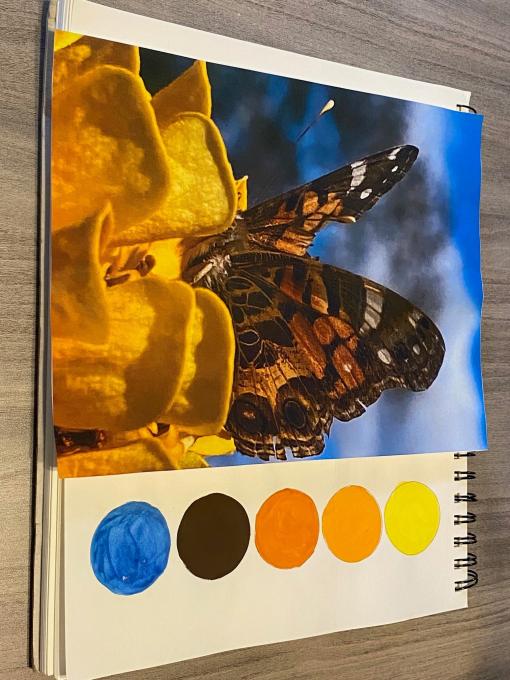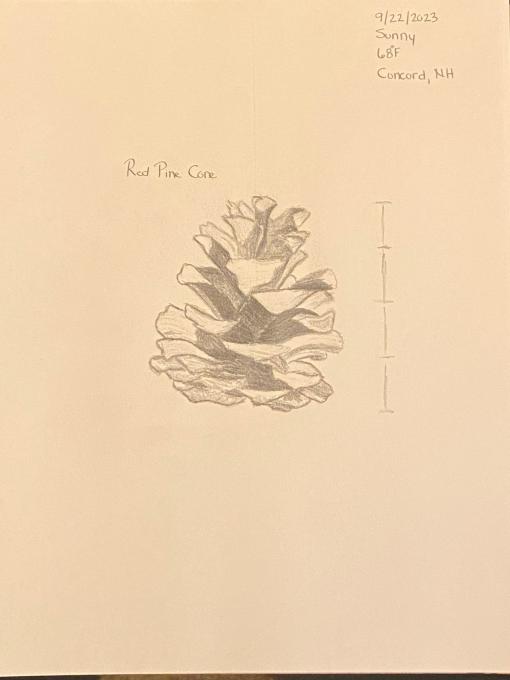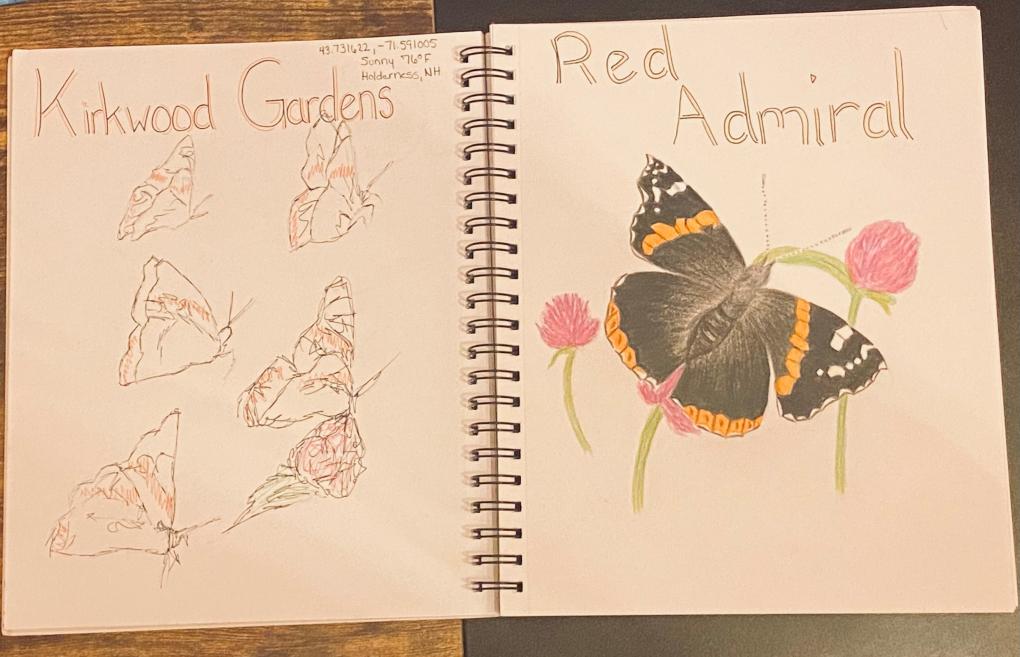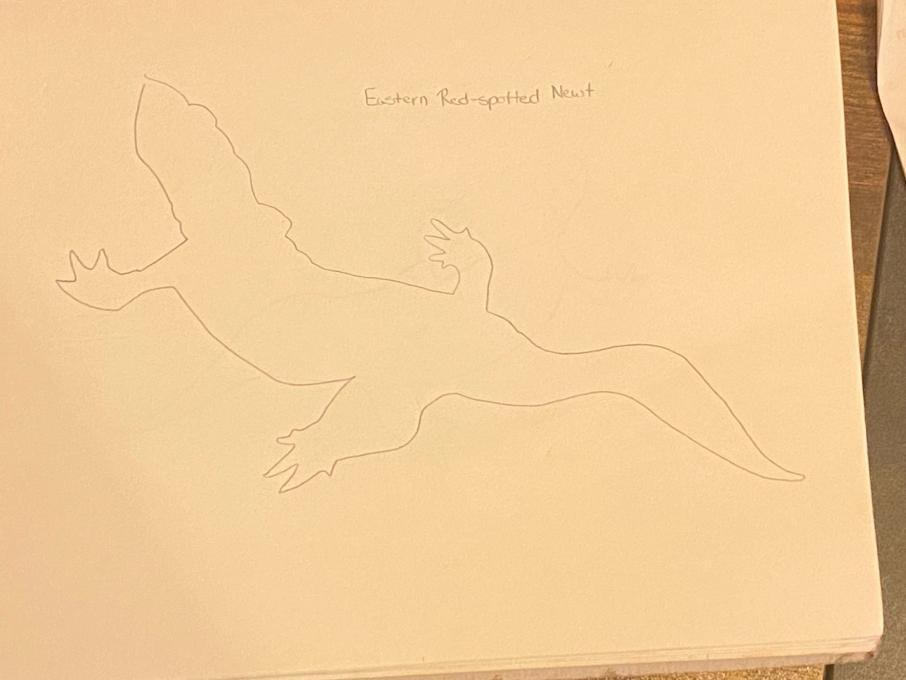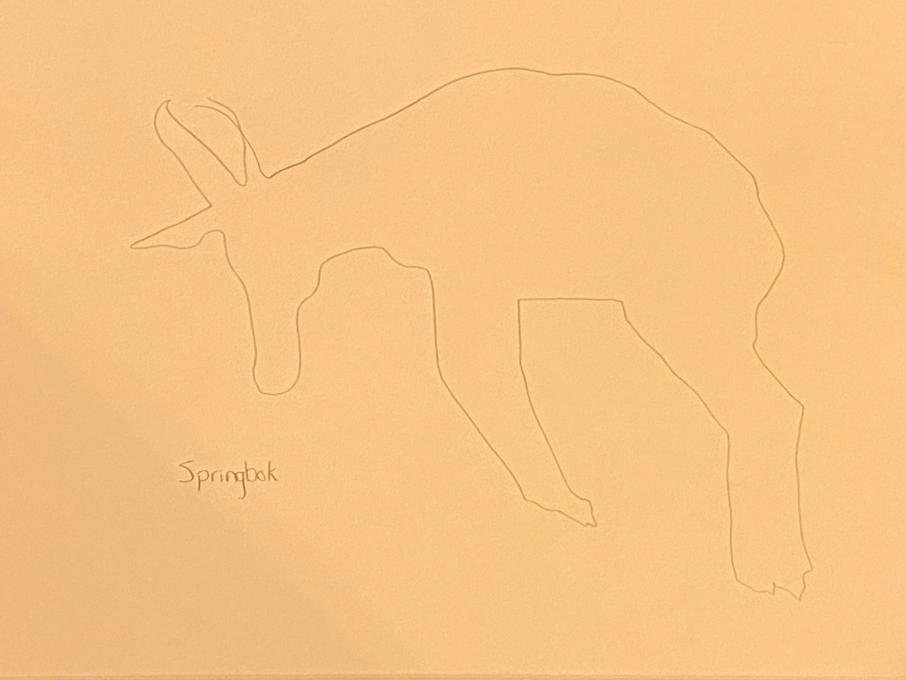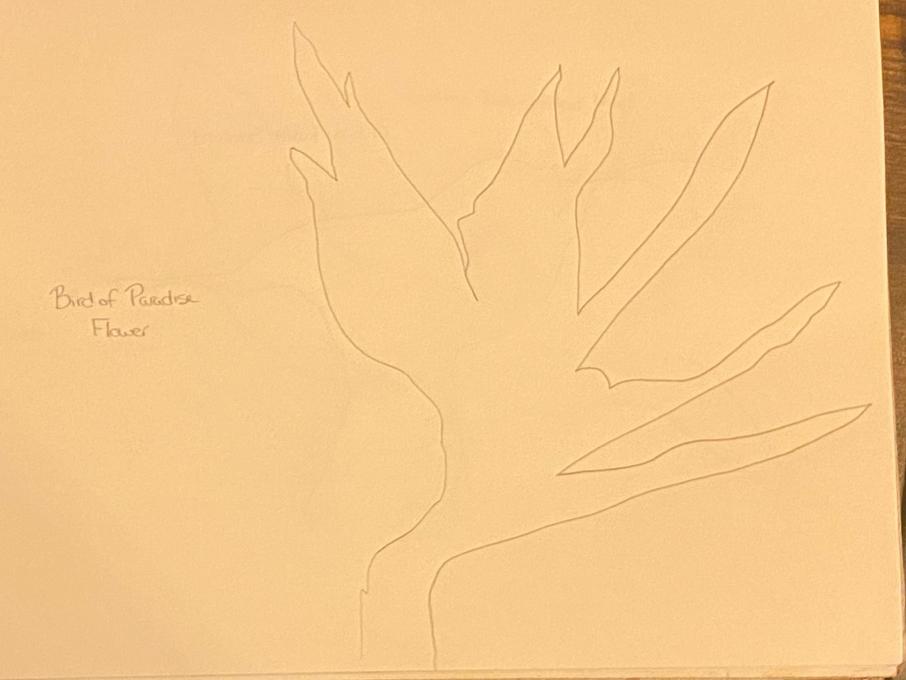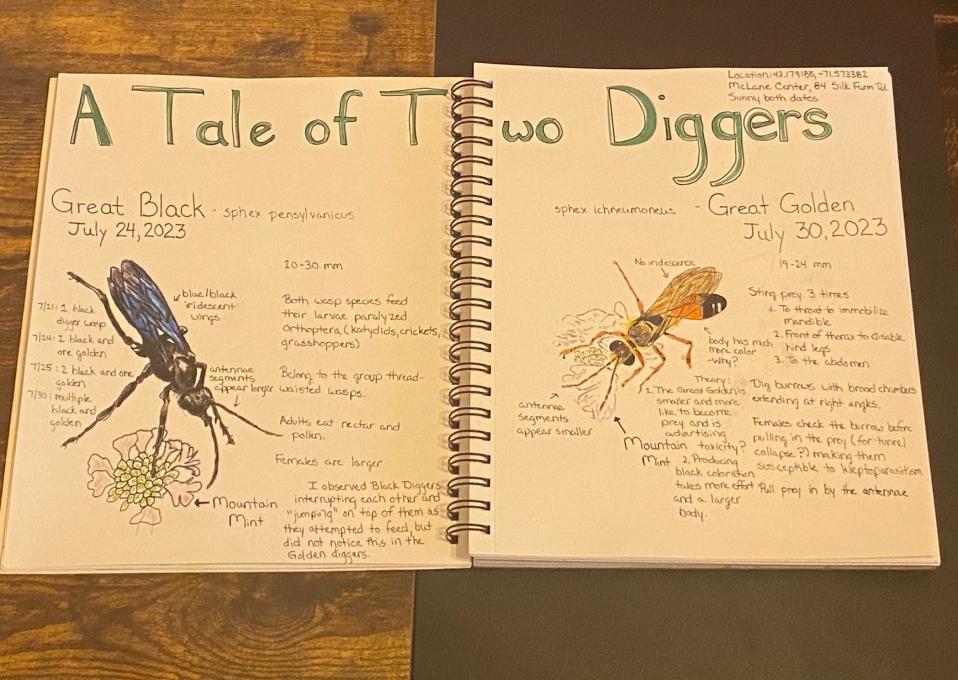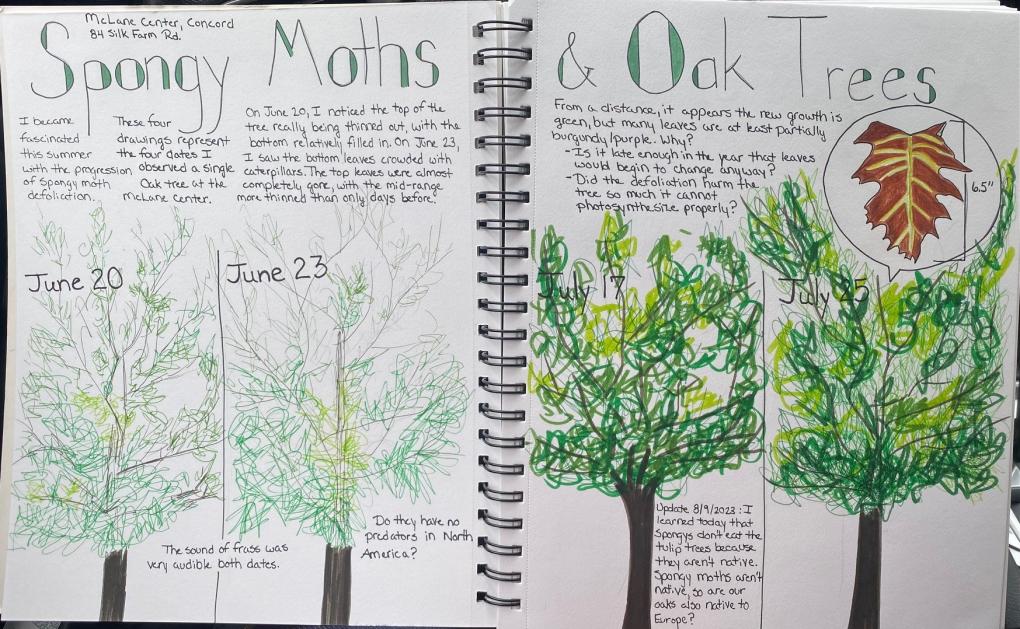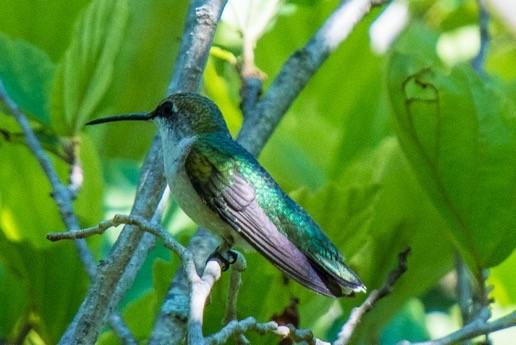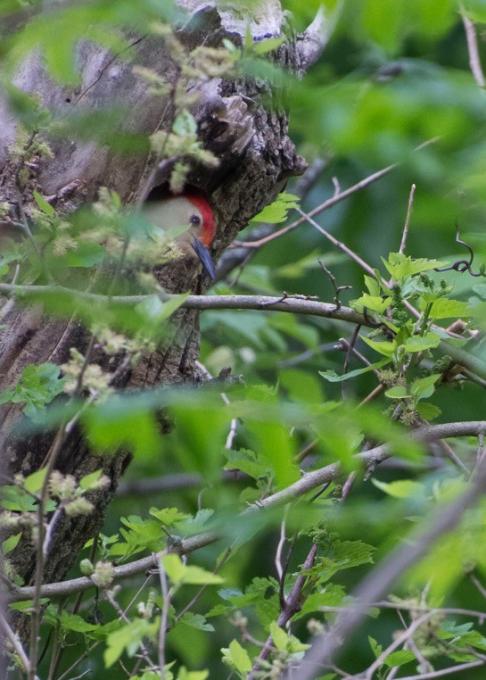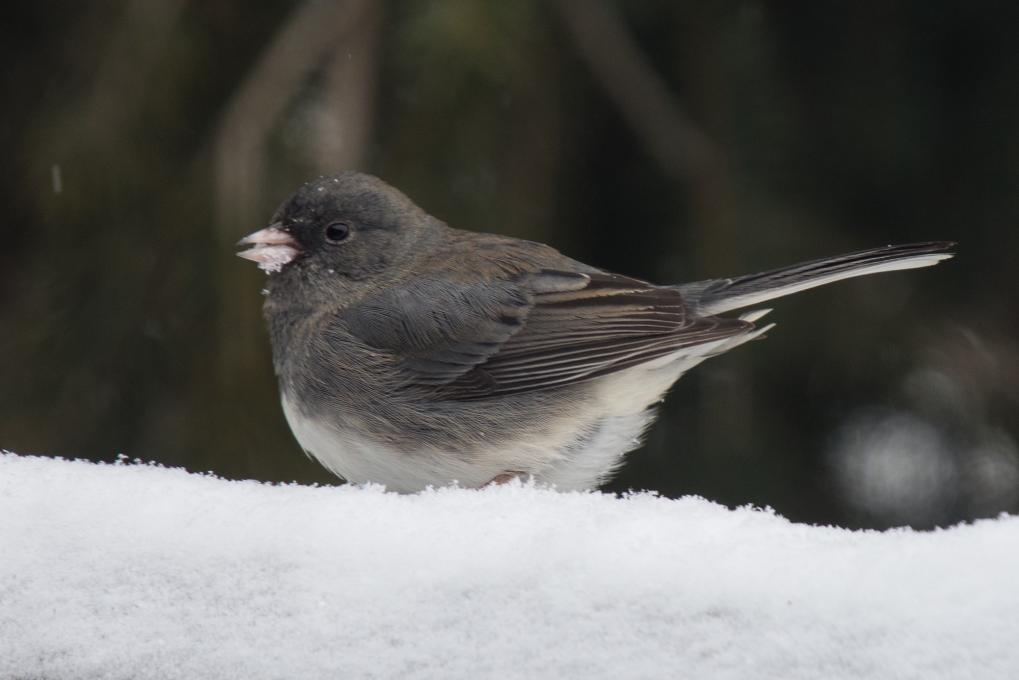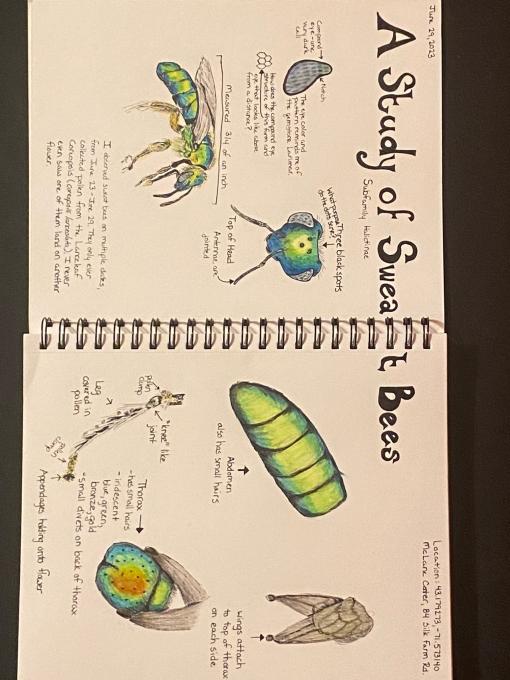Anita
Forum Replies Created
Viewing 19 posts - 1 through 19 (of 19 total)
-
AnitaParticipantMy favorite nature writers are: Kelly Brenner, author of Nature Obscura, because I love her endlessly curious and interested approach to nature; Douglas Tallamy, author of Bringing Nature Home, Nature's Best Hope, and The Nature of Oaks, for inspiring me to want to bring native habitats back into privately owned spaces; and Ed Yong, author of An Immense World, for creating in me a desire to understand the umwelt, or sensory experience, of the wildlife I encounter. I was also inspired by The Yellow Jacket poem above to write a short poem about a Dark-Eyed Junco I encountered on a forest trail.
 in reply to: The Power of Reflection #989437
in reply to: The Power of Reflection #989437 -
AnitaParticipantI tried both the dry on wet and wet on wet techniques, as well as color blending on the page. I don't know how much better the drawing is of the Warbler, but I would have never had the confidence to paint the image before this class, so I'm happy with that. I still need to work on color mixing. I'm still having a difficult time getting the colors that I'm looking for all the time.

 in reply to: See How Far You’ve Come #989419
in reply to: See How Far You’ve Come #989419 -
AnitaParticipant1. I am still not confident in completing the field sketching in the field, so I've been using my backyard where I can have a chair and a table. Otherwise I have to leave painting to an indoor activity. 2. I've been trying to still notice as I draw, like the color of new growth even though the majority of the leaves in the Winterberry Holly are falling off and that is a single berry that was produced. I need to get better about creating hypotheses for my observations. 3. I tried some of the "dry brushing" on the bark, but I had to use a lot of layers.
 in reply to: Filling Your Sketches with Color #989387
in reply to: Filling Your Sketches with Color #989387 -
AnitaParticipant1. This isn't my first experience, but definitely my first experience trying to closely observe and match colors. I found it easier to mix the warmer colors than the cool blue. 2. I used a photograph I had taken of an American Lady in a pollinator garden where I work. It was late in the season and the butterfly was a little beat up, but it was feeding on Zinnia's and I thought the colors with the sky looked really beautiful together. My challenge was definitely with the blue, which I never ended up getting "just right." 3. I noticed that the colors of the butterfly itself could all be achieved by beginning with the lightest color and then mixing in other colors from there to work darker. It was interesting that this butterfly's palette is so seamless.
 in reply to: Capturing Nature’s Color Palettes #989213
in reply to: Capturing Nature’s Color Palettes #989213 -
AnitaParticipantActivity 1: I work for a statewide Audubon society, so birds matter to me because they are one of the most visible groups of wildlife and also offer great ambassador species to rally people to conservation efforts. They're also so much fun to watch. Activity 2: I try to follow all 7 actions to help birds, and I've also started living a more vegan lifestyle to preserve bird habitat. I just started gardening this year, and am hoping to expand my native garden next year to include more options for birds, like blueberry bushes. Activity 4: I really want to take a dedicated bird-cation to South America and also take the Hummingbird course offered by Bird Academy. Since I live in a very small state, there aren't a lot of local resources about how to engage in community science through home actions, so I'm also working on a "guidebook" for people to create their own wildlife areas locally.in reply to: Activities: Helping Birds in Your World #988899
-
AnitaParticipantActivity 1: I visited an area that has a mix of two habitats; it is both a marsh and a mixed wood forest. In the forest I saw red-tailed hawks, crow, black-capped chickadee, and dark eyed juncos. In the marsh there weren't many birds this visit, but over the summer there is a Great Blue Heron rookery which is really spectacular, and there are vireos and red-winged blackbirds you can hear singing if you're out on the water in a canoe or kayak.in reply to: Activities: Exploring Bird Habitats #988820
-
AnitaParticipantOn a still subject measuring proportions worked very well. I always try to capture photos of my subject because I know I'm not quick enough to get all of the details before they move, so I started small. I think the proportions of this pine cone were helped with the measuring trick.
 in reply to: Getting the Proportions Right #983599
in reply to: Getting the Proportions Right #983599 -
AnitaParticipantI found that I am not a quick drawer at all, so this was a challenging exercise. I managed to locate a Red Admiral butterfly moving about some purple clover, that thankfully was much slower that the duck or the foxes in the videos. I also took a nice dorsal view photo with wings open that allowed me to sketch and color in at my leisure. Hopefully more practice will make this exercise easier and easier.
 in reply to: Capturing Behavior – Gesture Drawing #979893
in reply to: Capturing Behavior – Gesture Drawing #979893 -
AnitaParticipantActivity 3: I checked out the birds at a small pond by my place of employment. There have been four separate sandpiper species found there, which blew me away. I never would've guessed that these birds would be found at such a small pond in an urban area, I imagined that sandpipers would want large marshy muddy places to roam. Listening to their calls was interesting too. The Pectoral Sandpiper makes a deep whirring sound that I wouldn't have even credited to a bird had I heard it previously.in reply to: Activities: Local Bird Exploration #979326
-
AnitaParticipantThis exercise started out frustrating and then became a lot of fun since I knew the drawings would look terrible from the start. However, by the end I think I became more aware of the proportions of the drawings spatially on the paper, and where my pencil was in relation to the lines I had already drawn (but they by no means ever looked "good" or "correct"). There were a few areas that I think I paid attention and made good progress though; for example, the Springbok's ear and the placement of the newt's feet.


 in reply to: Focusing on Your Subject – Blind Contour Drawing #978994
in reply to: Focusing on Your Subject – Blind Contour Drawing #978994 -
AnitaParticipantThis was an interesting exercise, and really made me think about why two items are similar and yet different. Both of these digger wasps were feeding on the same patch of mountain mint on different days, and it was amazing to see the size and coloration differences, making me wonder why certain adaptations are needed in a species and not in another. For example, the Great Black Digger Wasp was so much larger than all the other wasps, bees, and moths at the patch that it was instantly recognizable from my periphery when it flew in.
 in reply to: The Power of Comparison #978988
in reply to: The Power of Comparison #978988 -
AnitaParticipantI have been trying to get better at noticing change, which I attempted by doing a study of an Oak tree that was being defoliated by Spongy Moth caterpillars. I would like to work on counting and measuring more as well, putting more numbers into my journaling.
 in reply to: Noticing Themes in Nature #977892
in reply to: Noticing Themes in Nature #977892 -
AnitaParticipantFor activity 1, my favorite bird was the Tropicbird. Even though this is the Red-tailed, it reminds me of the "Longtail," the White-Tailed Tropicbird from my recent trip to Bermuda. I was there as the young were fledging and it was magical to watch the groups of three flying around but never landing. For activity 2, I am surprised how many bird species I see given that I live in a fairly urban environment. We have Ruby-throated hummingbirds (which are quickly becoming my favorite), wild turkeys, Red-tailed Hawks, and a myriad of seed eating birds. For activity 3, my favorites are the Ruby-throated hummingbird because they move unlike any other birds around my neighborhood, the Red-bellied Woodpecker who has nested in our backyard this year and we've affectionately named Spencer; and the Dark eyed Junco, which is just adorable in the winter. We don't have a lot of species in the winter, and this one comes south from Canada and hangs out in the snow.


 in reply to: Activities: Exploring Birds #977476
in reply to: Activities: Exploring Birds #977476 -
AnitaParticipantMy sit spot is more of a stand spot, as there isn't great views from the bench. My place is a pollinator garden where I work, and for a few days I went and looked around when there weren't any other people out there to see just what was going on. I came upon several sweat bees working away gathering pollen on some Coreopsis. After a few days of gathering notes about them, taking photos, trying to measure them with a little ruler, and observing their behavior, I created a journal page about them. I'm going to have to go back and write in the conditions and weather, since I forgot to put that in. Every time I observed them out there it was around 12 p.m. EST and sunny.
 in reply to: Opening Your Senses #977043
in reply to: Opening Your Senses #977043 -
AnitaParticipantThis is my first year gardening so I don't think I have anything "new" yet, but I've counted 28 species of birds so far in my backyard, and I hope to get a lot of new ones by next year. I'm also hoping to pull out more and more lawn space each year to make room for attractive landscaping with a purpose.in reply to: Enjoy and Share #967674
-
AnitaParticipantMy backyard has many mature trees in it and is mostly shade. Also, I have a dog who spends a lot of time in the yard out back. Birds, squirrels, and chipmunks can hang out in the trees, but I don't know that I want to try and bring in many species to the back. However, my front yard receives a lot of sun and has soil from wet to dry conditions. Unfortunately, I'm only going to be able to plant in a couple of sections this year, as there is a 500 square foot space that I am working to "kill" the lawn and it won't be ready until the fall. I have never done any type of gardening before, so this is going to be an exciting new experience for me. I also want to try a few containers and maybe have a rock garden (my area has a LOT of rocks).in reply to: Gather Your Local Knowledge #966229
-
AnitaParticipantI agree with some of challenges mentioned by others: I had no idea how to identify what I had as native, non-native, or invasive. It turns out one of the bushes I have is a non-native Quince shrub, but it's been there for 40 years and is well behaved and doesn't spread. It also feeds and shelters several species of bird and bee. Another plant I found was an invasive burning bush, so the challenge will be safely removing it without dispersing seeds. Locating your local cooperative extension or Master Gardeners is a real help; they're often very willing to take a look at what you have and help you plan. I think I have a lot of good layers of plants, but one challenge I have is ground cover. I can't do large areas or my dog will just run through it like it's grass, so I think I'm going to have to intersperse it with higher plantings to discourage a "lawn" like appearance for her.in reply to: Keys to Gardening for Birds #962526
-
AnitaParticipantI have some items to cover the bases: hardwoods like Oaks, conifers, shrubs like Black Chokeberry and Silky Dogwood, perennials like Red Columbine and Butterfly Weed, vines like Trumpet Honeysuckle, but the two main areas I would like to improve are my water sources above the standard birdbath and also either some native grasses or some ground cover for ground-nesting species. I think in the year that I've been in my home the only two nesting species I've had so far are Black-capped Chickadees and a Red-bellied Woodpecker. I don't have any nesting boxes so maybe I could entice a Carolina Wren to stay if I put one up.in reply to: Give Birds What They Need #961064
-
AnitaParticipantI currently have over ten very mature trees around my property, including Birch and Oaks. However, because of this there is little sunlight in the backyard, so I'm working to turn an area next to the house in the front yard into a garden full of perennials, vines, and smaller shrubs to support not only birds but also pollinators. I have several bird feeders right now that bring in Northern Cardinals, Black-capped Chickadees, White and Red-breasted Nuthatch, Woodpeckers, and both Chipping and White-throated Sparrows. Eventually I'm wanting to completely eliminate my bird feeders and instead provide them with "real" food in the form of native plants and insects. I just created a large brush pile too, so hopefully that will provide some habitat for various species.in reply to: Joys of Naturescaping #961059
Viewing 19 posts - 1 through 19 (of 19 total)
